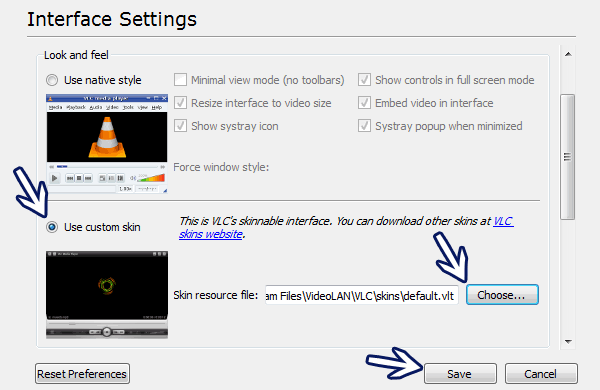The VLC Media Player is a very popular open source media player. The player supports most of the media file formats including MPEG-2, H.264, DivX, MPEG-4, WebM, WMV and many other. It is simple, powerful and really very fast. But it's too simple interface is disappointing.
If you are not happy with the default skin of the player, you can change it. The player has an option to change the default skin to your desired one. And the very good part is that fans of this player always keep creating and submitting fresh and natty skins to the project. These skins are also free to download.
Download Readymade Skins
All VLC skins are available on skin page. You can download your favorite one from the page. If you want to try all of them consider downloading all the skins at once pack [37 MB].
Creatin Your Own Skins
Creating and using your own skin is very much joyful. For creating skins you will need a tool called VLC Skin Editor. You can donload this from it's development page. This program requires the Java Runtime Environment (JRE) 6 or later. If you do not have it, download it at the Java download page. After having these necessary tools, you can refer to VLC skin creating guide. Once you have finished creating the skin and interested to share it with the world, upload it to the VLC skin directory.
How to Apply a Skin?
All the skin files are of .VLT type. After downloading the file save them on the skins folder in the VLC installation directory. The default location could be C:Program FilesVLCskins (for Windows). For Linux/Unix save them in ~/.local/share/vlc/skins2 directory.
Now go to Tools->Preferences or press Ctrl+P to open the preferences box. In the preference box click the "Interface" thumb at the top left. You will see a similar window like this.
In this window select the "use custom skin" option and then browse for the downloaded .VLT skin file. After selecting press Save button. VLC needs to be restarted to change to skins mode.

Note: This method is not for Mac OS X!
